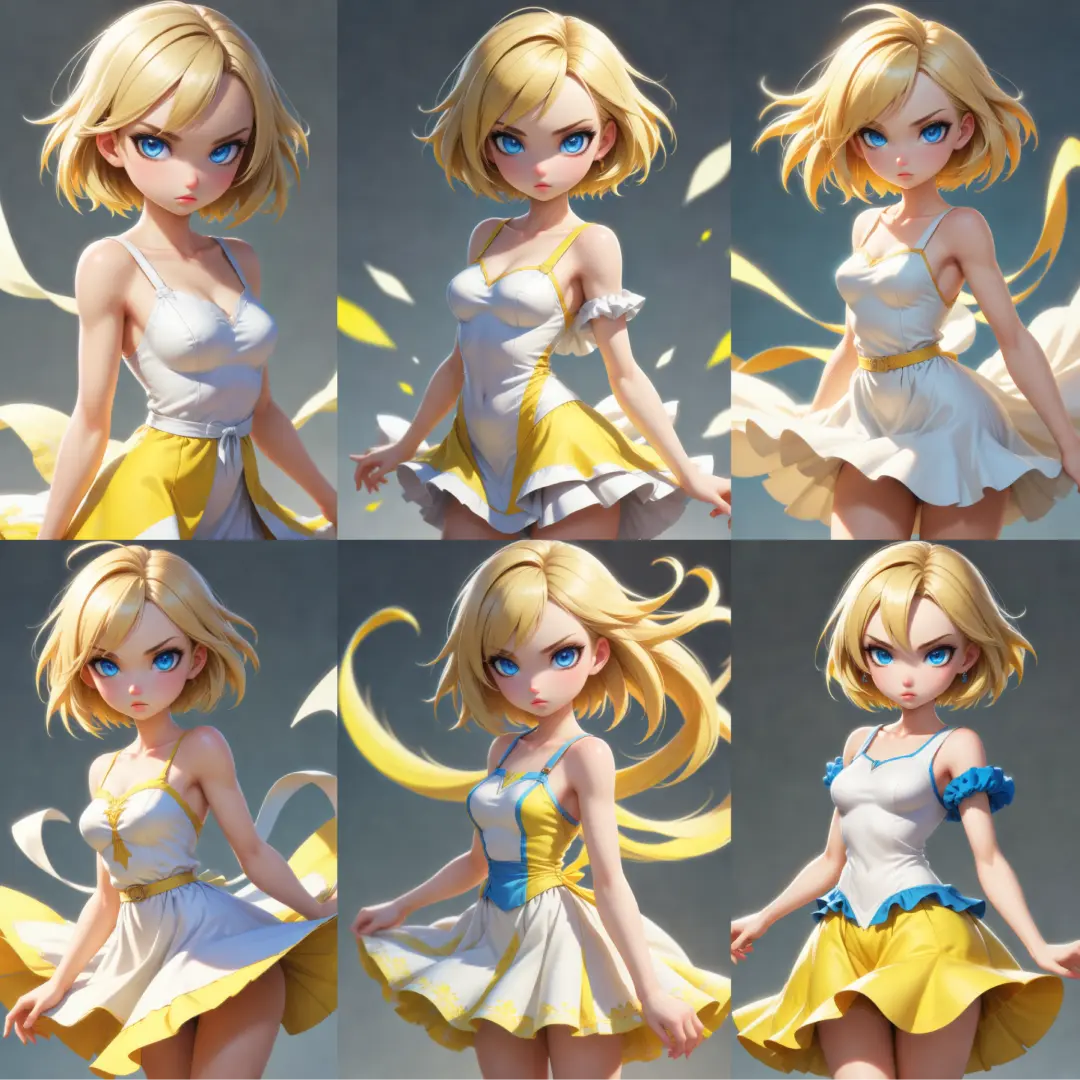ComfyUI Extension: Adaptive Guidance for ComfyUI
ComfyUI-Adaptive-Guidance
asagi4 (Account age: 725 days) Nodes
View all nodes(2) Latest Updated
2025-02-24 Github Stars
0.05K
How to Install Adaptive Guidance for ComfyUI
Install this extension via the ComfyUI Manager by searching for Adaptive Guidance for ComfyUI- 1. Click the Manager button in the main menu
- 2. Select Custom Nodes Manager button
- 3. Enter Adaptive Guidance for ComfyUI in the search bar
Visit ComfyUI Online for ready-to-use ComfyUI environment
- Free trial available
- 16GB VRAM to 80GB VRAM GPU machines
- 400+ preloaded models/nodes
- Freedom to upload custom models/nodes
- 200+ ready-to-run workflows
- 100% private workspace with up to 200GB storage
- Dedicated Support
Adaptive Guidance for ComfyUI Description
Adaptive Guidance for ComfyUI enhances the user interface by dynamically adjusting guidance based on user interactions, improving usability and efficiency. This implementation tailors the UI experience to individual needs, optimizing workflow.
Adaptive Guidance for ComfyUI Introduction
ComfyUI-Adaptive-Guidance is an extension designed to enhance the ComfyUI experience by implementing adaptive guidance. This extension aims to improve the efficiency and quality of image generation by dynamically adjusting the guidance scale during the sampling process. For AI artists, this means faster and potentially more accurate results when generating images, as the extension intelligently manages the computational resources and guidance parameters.
Adaptive guidance can help solve common problems such as slow inference times and suboptimal image quality by skipping unnecessary calculations and focusing on the most relevant parts of the image generation process. This makes it a valuable tool for artists looking to streamline their workflow and achieve better results with less effort.
How Adaptive Guidance for ComfyUI Works
At its core, ComfyUI-Adaptive-Guidance works by calculating the cosine similarity between the conditional and unconditional outputs of the U-Net model used in image generation. These outputs correspond to the "positive" and "negative" prompts provided by the user. When the similarity between these outputs crosses a specified threshold, the extension sets the Classifier-Free Guidance (CFG) scale to 1.0. This effectively skips the negative prompt calculations, speeding up the inference process.
To put it simply, imagine you are painting a picture and you have a guide that tells you what to include and what to avoid. If the guide sees that your painting is already on the right track, it stops giving you unnecessary advice, allowing you to focus on the important details and finish your painting faster.
Adaptive Guidance for ComfyUI Features
AdaptiveGuidance Node
- Location: Found under
sampling/custom_sampling/guidersin ComfyUI. - Function: Calculates the cosine similarity between the conditional and unconditional outputs and adjusts the CFG scale accordingly.
- Threshold Setting: Typically set between
0.99and1.0to ensure high similarity before skipping negative prompt calculations.
Uncond Zero
- Function: Enables "uncond zero" CFG after the normal CFG is disabled. This feature is inspired by the Uncond-Zero-for-ComfyUI extension.
- Usage: Set
uncond_zero_scaleto a value greater than 0 to activate this feature. - Benefit: Can slightly improve the quality of the generated images by continuing to use a modified guidance scale even after the normal CFG is turned off.
Adaptive Guidance for ComfyUI Models
Currently, the extension does not include multiple models but focuses on enhancing the existing ComfyUI framework through adaptive guidance techniques. The primary model used is the U-Net model, which is standard in many image generation tasks.
What's New with Adaptive Guidance for ComfyUI
Recent Updates
- Cosine Similarity Calculation: The extension now includes a method to calculate cosine similarity between conditional and unconditional outputs, which is crucial for adaptive guidance.
- Uncond Zero Feature: Added the ability to enable "uncond zero" CFG, providing more flexibility and potentially better results for users. These updates are designed to improve the overall efficiency and quality of image generation, making the extension more useful for AI artists.
Troubleshooting Adaptive Guidance for ComfyUI
Common Issues and Solutions
- Issue: The extension is not speeding up the inference process as expected.
- Solution: Ensure that the threshold for cosine similarity is set correctly (between
0.99and1.0). If the threshold is too low, the extension may not activate the CFG adjustment.
- Issue: The generated images are not as high quality as anticipated.
- Solution: Try adjusting the
uncond_zero_scaleto find the optimal setting for your specific use case. Sometimes, a slight tweak can make a significant difference in image quality.
Frequently Asked Questions
- Q: What is the optimal threshold setting for the AdaptiveGuidance node?
- A: The recommended range is between
0.99and1.0. This ensures that the guidance adjustment only occurs when the outputs are highly similar. - Q: How do I enable the "uncond zero" feature?
- A: Set the
uncond_zero_scaleto a value greater than 0 in the AdaptiveGuidance node settings.
Learn More about Adaptive Guidance for ComfyUI
For additional resources, tutorials, and community support, you can visit the following links:
- Adaptive Guidance White Paper
- Uncond-Zero-for-ComfyUI GitHub These resources provide in-depth explanations and examples that can help you get the most out of the ComfyUI-Adaptive-Guidance extension.
Adaptive Guidance for ComfyUI Related Nodes
RunComfy is the premier ComfyUI platform, offering ComfyUI online environment and services, along with ComfyUI workflows featuring stunning visuals. RunComfy also provides AI Models, enabling artists to harness the latest AI tools to create incredible art.



